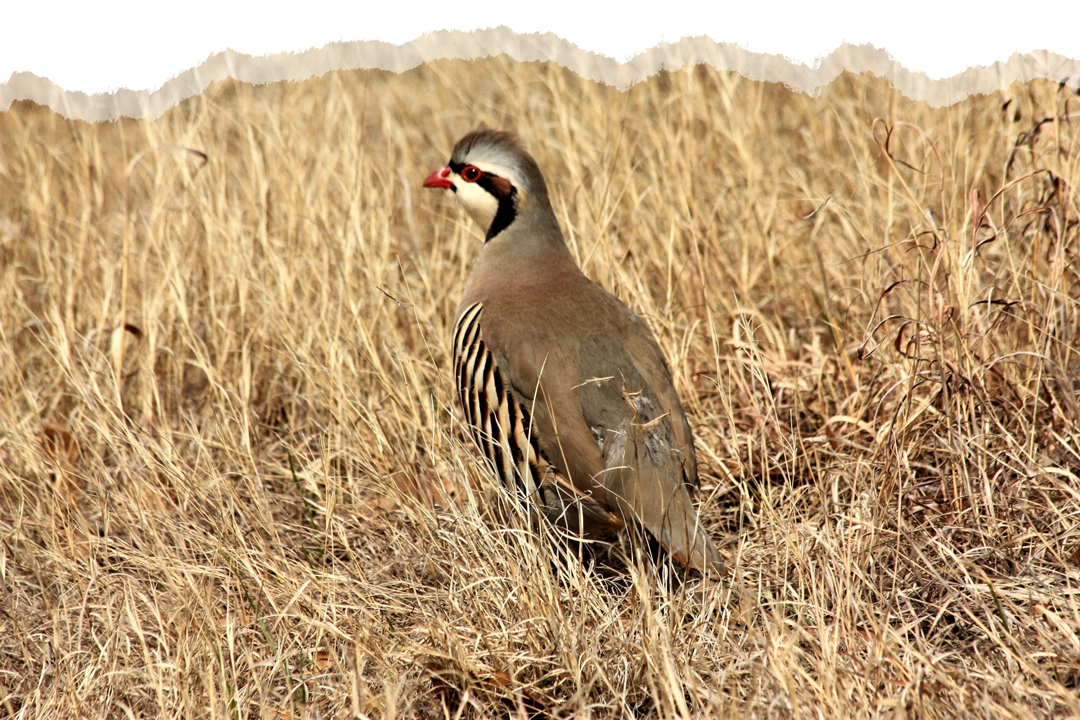What lands are Partridge Chukars native to?
Chukar Partridges belong to the pheasant and grouse family; and they are native to southern Asia and the Middle East. These birds have since been introduced to other parts of the world, including New Zealand and the western part of North America. The habitat of the chukar is primarily founded upon desert plains where mountain ranges, rock formations, bushy slopes, canyons, and/or mild climates are present.

How to spot a Chukar and where.
Because of the chukar’s neutral coloring, the bird is easily able to blend in with the landscape; a predominately tan color with striping on the wings, a red bill, a black band through the eyes as well as down and around the neck, gives the chukar a distinctive appearance. Should chukars become spotted and spooked, these birds will demonstrate their ability to run and easily navigate an escape through steep and uneven terrain, making them difficult to track. What is more, the chukar is a ground-dwelling bird; though weather conditions can negatively affect their population along with the scarcity of water at times, they do appreciate the dirt. Bathing in the dirt allows the chukar to keep their feathers looking immaculate, which is a good idea when nesting season begins in March to August.

Common behaviors and nesting traits of the Chukar.
Male chukars attract females by tilting their head and circling the females; males will sometimes feed the female as a means of demonstrating their affection. The female chukar will build a nest on the ground; under a rock or under a shrub, a chukar will burrow a small depression within the Earth, lining the depression with grass, twigs, leaves, etc. The female chukar can lay as little as 6 eggs and as many as 25 eggs; she may also have a total of 2 clutches, in which the female chukar and male chukar will assist in the incubation process that lasts for an average of 23 days. Within a few days of the eggs hatching, the chicks can leave the nest after being tended to by both parents; they are soon able to find their own food, acquiring the ability to fly in 7 days – reaching full size in 2 months. Chukars measure about 13 to 15 inches in length; they have a 20-inch wingspan and weigh a little over 1 ½ pounds and can live up to 5 years. Their diet consists of seeds, leaves, berries, and insects. They also prefer traveling in coveys. Chukars are unique and speedy birds, agile and very much fleeting.

